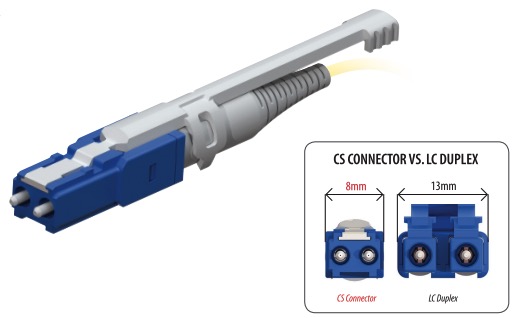CS Connector is developed by Senko Advanced Components, and the CS is widely considered to be the best option of the three. This CS Connector design utilizes the tried-and-true standard 1.25mm LC form factor ferrule, but with tighter spacing between the ferrules. With the CS design, pitch is reduced to 3.8mm from the LC standard of 6.25mm. The result is a theoretical capacity increase of 80%. Senko claims the new connector is specifically designed for 400G optimization using the next generation of QSFP-DD transceivers.
Technical engineers installing and sustaining these networks will need cleaning products that are effective, affordable, and actually fit into CS ports. The clearances on CS adapters are very tight, which makes it difficult for cleaning tools to get inside the ferrule. High-quality fiber cleaning sticks can navigate around the mechanical housing of the connector, but inexpensive cotton swabs will be too large. Foam swabs lack the rigidity to clean properly. Bulky mechanical “push to clean” tools simply won’t fit. Fortunately, 1.25-mm tools are now reaching the market that accommodates CS-style ports.
There are so many providers in the market that providing “duplex” cleaning tools that purport to clean both end-faces of a duplex connector simultaneously. However, most of these tools are engineered for the standard LC duplex form-factors, so the cleaners’ barrels will not fit into the adapter port. Additionally, the cleaning tips won’t fit the new CS connector ferrules. Even more importantly, techs need to inspect and clean each end-face, both sides. If only one end-face is dirty, a duplex tool still will clean both, which is wasteful. Extra cleaning also can induce static charges. All in all, these can be quite costly, especially if the tech is simply cleaning every end-face.
Since these might be the obstacles of the CS connector, however, then I guess most of this will be solved in the future, CS Connector might be the next good choice for the super-high-density data center.
